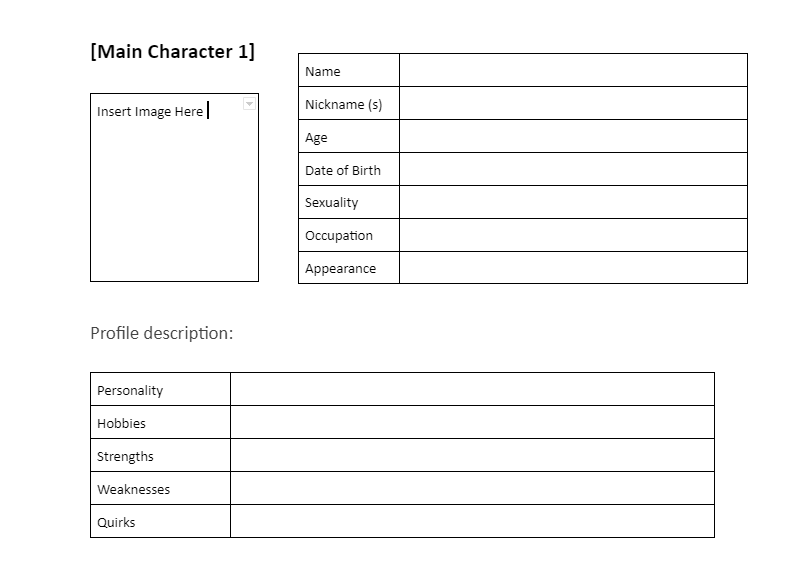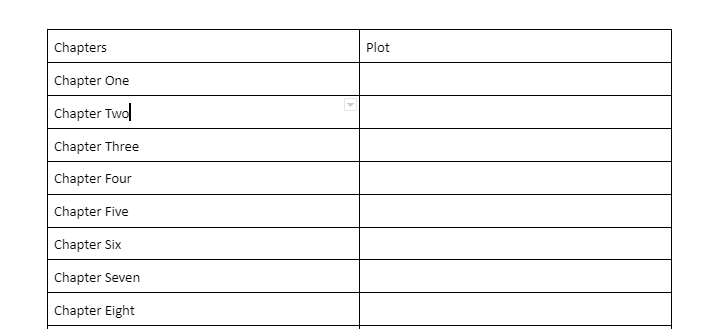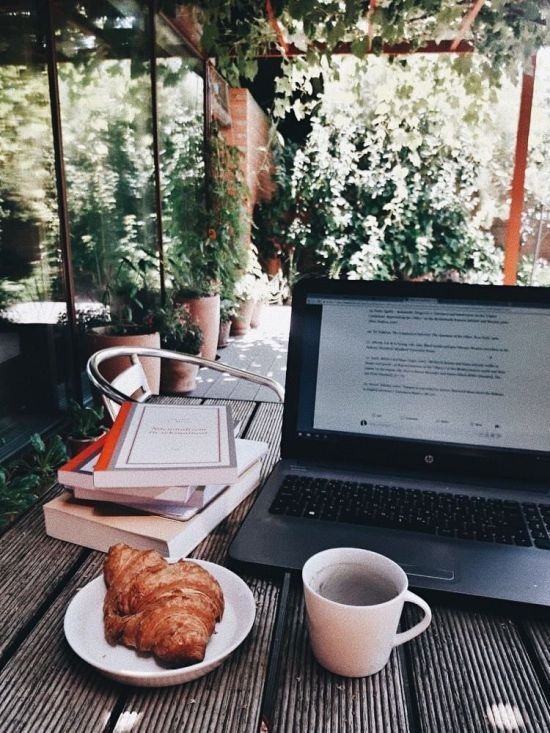Writing a novel is an experience I both wish everyone could have and one I wouldn’t wish on my worst enemy. It’s exciting, it’s exhausting, you’ll love it, you’ll hate it. But there are some things I found to make the journey easier.
1. Master Brain Dump(s)

So, there are a few types of Master Brain Dumps you can start. I would personally recommend them all, but you can pick and choose.
The one file I always keep open is the file with all of my ideas (I call it Story Ideas — creative, I know). I keep getting new ones, or keep thinking of new plot points for my old ideas, and need a place to write them down quickly. This way, my stories keep growing organically, as I think of new things.
At the top of the file, I keep a bullet point list of my story ideas with quick recaps, and then a larger, more detailed list below (with H3 titles, for easy table of contents access). I usually keep my main plot in a green box (you can easily make it with one colored table cell), and add any thoughts/new ideas, or character details below.
Then there’s my diary (I call it Notes on Execution for some reason). This is where I write down all of my worries about my stories, my personal thoughts on them, notes for myself when I have good/bad days. Most of all, this is where I talk to myself when I need to.
And then there’s the master brain dump for the story I’m working on at the moment. This is where I work out any plot kinks, and add any stray information or research I find, maybe even photos, though I try to keep those on Pinterest.
2. Character Sheet

Personally, I’m not a huge fan of character sheets and prefer to work out my characters as I write the story, but it’s a useful (not to mention fun) thing to have. See the template above (Gdoc link here).
3. Plotting File

Now, this is where I work out what happens in each chapter. I’m more of a pantser than a plotter, so my chapter descriptions are very general. However, it’s still a useful tool and I like to have at least a part of the story worked out.
What I like to do most is fill in Chapter One part, and then the last chapter part. That way, I have a clear (sort of) map from point A (where my characters/story are) to point B (where they need to be at the end). That way, I can still pants as much as I want and find new plot points, but I still know where I have to go.
If you want to check it out (or use it), here’s a link to my Plotting sheet here. I’ve also added some story structures in there, which sometimes help me work out what needs to happen and when.
4. And now for some motivation
This is not a useful file, but it still counts because it’s extremely useful, especially if you have confidence issues like me.
So, at the top of every file I work in (doesn’t matter if it’s a brain dump, plotting file, my main file where I write the actual book), I have a little green READ ME box. In that box, I write motivational things for future me to read.
See here:

And it doesn’t always work, sometimes I still feel down about myself, but it does work sometimes, and that’s all that matters. Plus, you can customize this however you like.
For example, I like to add a bullet point about not worrying about the length of my novel. I write shorter novels and always feel insecure about that, but I list some short novels that are really popular for a boost of confidence.
I also like to add a bullet point about writing dialogue first. This system of writing works best for me because I feel like I’m pretty strong in that area and it helps me map out the scene without lingering on details I don’t like (like character physical descriptions or settings).
Other Useful Tools
1. Pinterest
We all know (and love) this one. You can use Pinterest to build book or character aesthetic, get setting ideas, imagine your creatures or places better (if you’re writing fantasy), and more. I always get inspired when I use it (although I do get sucked in and start wasting time).
2. Spotify
Obviously, your book needs a playlist. I like to build it as I go, since different scenes or characters have different songs to them, but you can also build it in advance.
3. Instagram
While it can be a big distraction from writing, it’s also a really useful tool for getting ideas, and especially for marketing your book. You can meet many great writers there, see character art, and more.
4. Google (duh!)
Obviously, Google. I use it for research, finding synonyms, finding that one word that’s on the tip of my tongue but I can’t remember, etc.
Bottom Line
Some of these may be obvious, but I hope you found a useful new trick to add to your writing arsenal. None of these will write your book for you, I can tell you that much, but they will help you get started and keep you on track.
Do you have any useful tips for getting started with writing? Drop them down in the comment section!
Discover more from Bookish Delights
Subscribe to get the latest posts sent to your email.

3 thoughts on “Useful Files For Writing Your Novel (With Templates You Can Copy)”